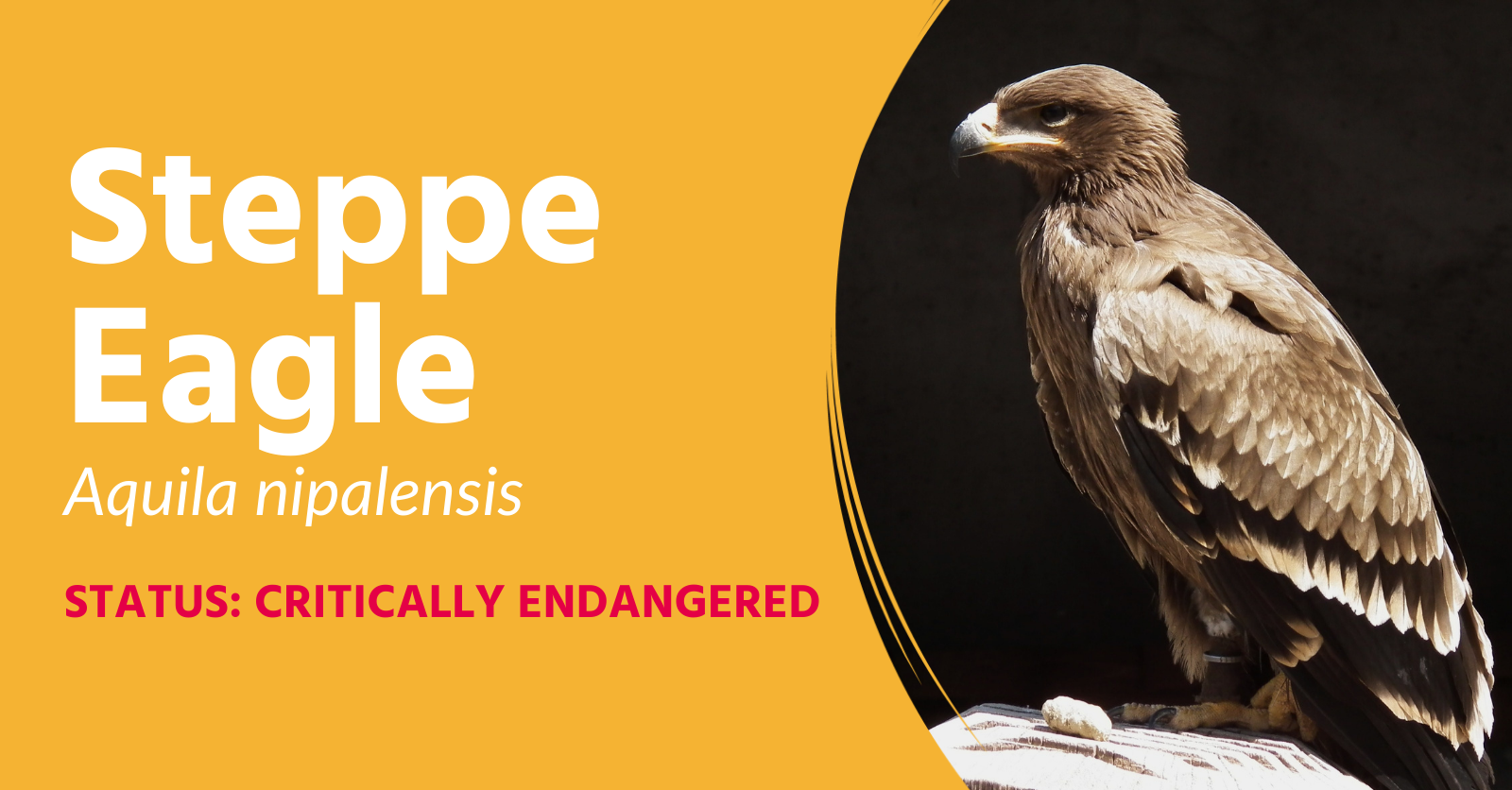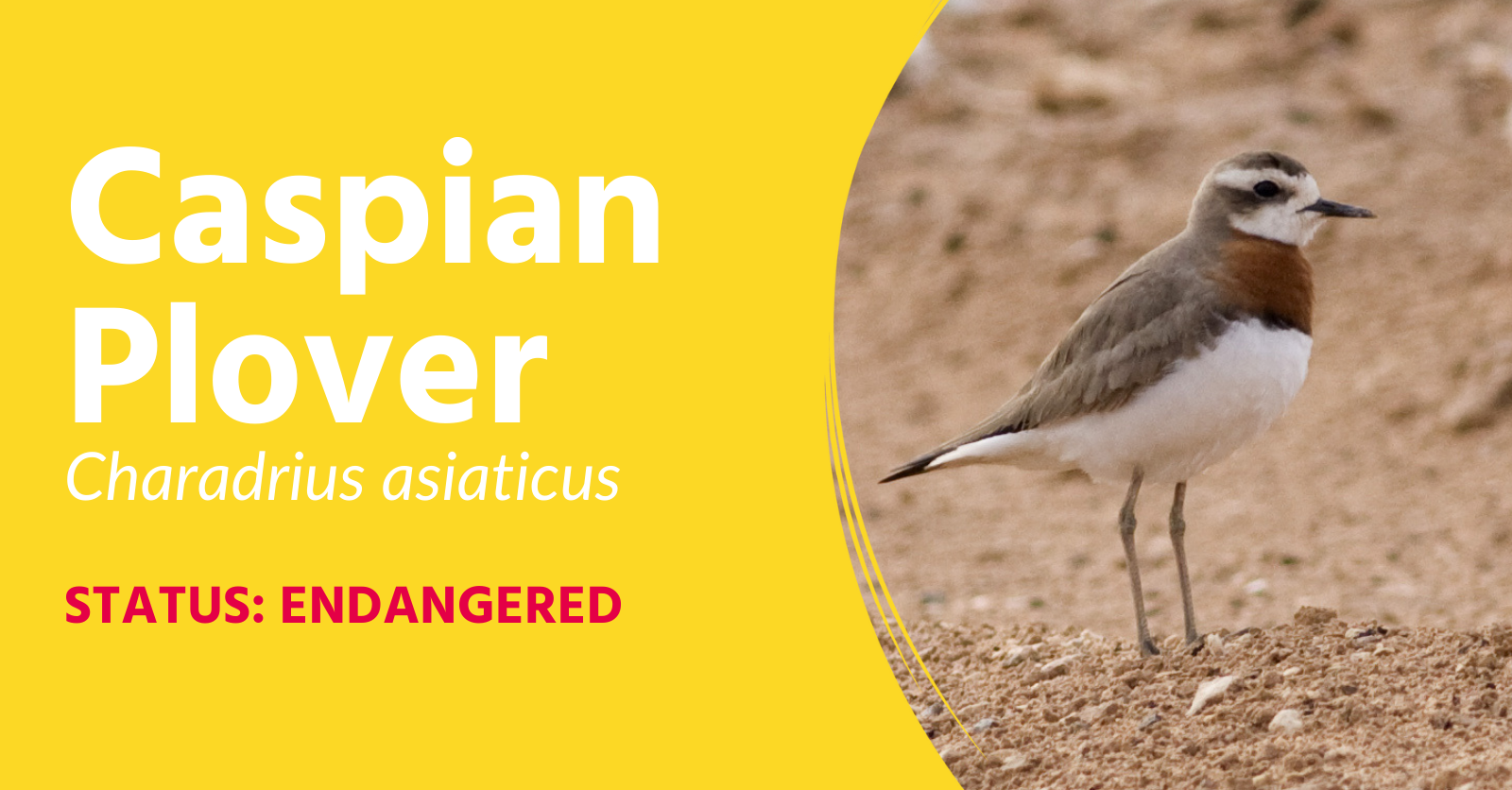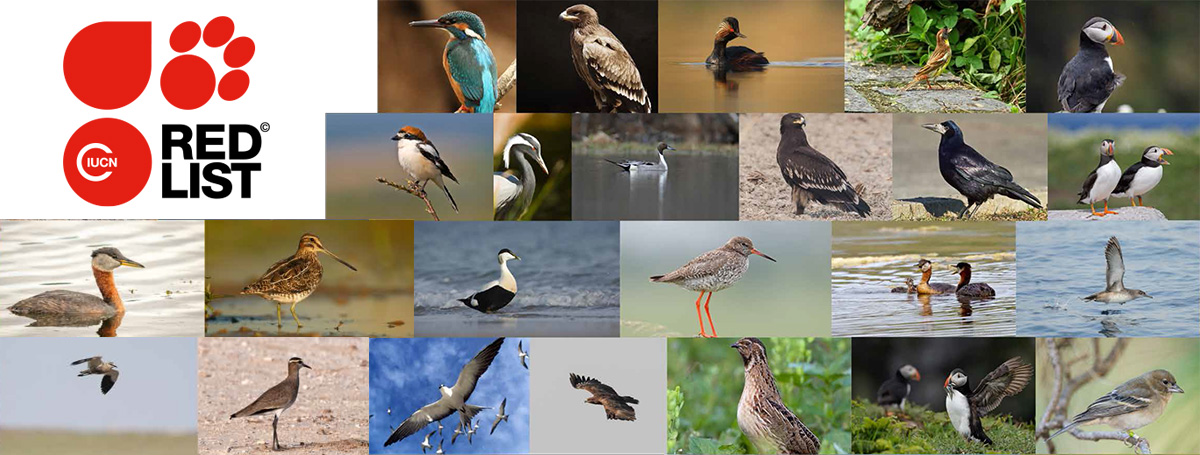The European Red List of Birds 2021 published today

Today, BirdLife International released the European Red List of Birds 2021 [1]. The Red List reviews the regional extinction risk of 544 bird species in over 50 countries and territories in Europe and follows the IUCN Red List Categories and Criteria applied at regional level [2]. Each species extinction risk is evaluated from "Least Concern" to "Extinct".
The data were collected by thousands of experts and volunteers from all over Europe. This is the fourth assessment done by BirdLife International, with previous editions released in 1994, 2004, and 2015. It is launched in the week that the UN Convention on Biological Diversity is discussing a new plan to tackle the crisis facing the world’s wildlife.
Because of how sensitive birds are to any changes in their environment, they are a perfect indicator to understand how our planet is doing. All life on this planet is connected, so when birds are in danger, by extension, we’re all in danger.
Some of the main findings of the study include:
- 1 out of 5 bird species in Europe is threatened or Near Threatened by extinction
- 1 out of 3 bird species in Europe has declined over the last few decades
- Seabirds, wildfowl, waders, and raptors are the most threatened and fastest declining groups of birds in Europe
- Marine habitats, as well as farmlands, wetlands and grasslands are the habitats with most threatened and/or declining species
- The majority of Larks, Buntings and Shrikes are now declining; other major taxonomic groups with significant declines observed are ducks and waders
- 71 species (13%) are Threatened (CR, EN, VU) in Europe
- Another 35 species (6%) are Near Threatened
- 5 species are still Regionally Extinct

The main drivers of declining bird populations observed in European habitats include:
- Large-scale land-use change
- The status of the Common Snipe (Gallinago gallinago) has changed from Least Concern to Vulnerable primarily due to habitat loss and degradation in its breeding grounds
- Intensive agricultural practices
- The status of the Turtle Dove (Streptopelia turtur) continues to be Vulnerable, as intensive agricultural practices wipe out its breeding grounds and powerful pestcides cause a significant decline in food availability
- Over-exploitation of marine resources
- The status of the Common Eider (Somateria mollissima) has changed from Vulnerable to Endangered due to a combination of factors including diseases and food shortage
- Pollution of inland waters
- The status of the Black-necked Grebe (Podiceps nigricollis) has changed from Least Concern to Vulnerable, most likely due to water pollution from agricultural activities and urban run-offs
- Unsustainable and commonly used forestry practices
- The status of the Great Spotted Woodpecker (Dendrocopos major) is classified as Least Concern, but it has a declining population mainly due to unsustainable forestry practices Infrastructure development
- Infrastructure development
- The status of the Spanish Imperial Eagle (Aquila adalberti) continues to be Vulnerable as its population suffers from high mortality from colliding with and being electrocuted by energy infrastructures

While the headlines in the new European Red List are stark, there is also some good news. The improved status of the Red Kite (Milvus milvus) [3] and the Azores Bullfinch (Pyrrhula murina) [4] – two remarkable conservation success stories – shows that targeted approaches to species recovery can work; while interventions such as well-designed agri-environment schemes can provide a lifeline to declining species like the Corncrake (Crex crex).
Anna Staneva, Interim Head of Conservation, BirdLife Europe:
Birds have been on this planet for longer than we have, but at the speed humans are exploiting and destructing, we are seeing some species plummet towards extinction. The Red List is a crucial resource for everyone working to stop the biodiversity and climate crises, because where birds are in trouble, nature is in trouble.
Claire Rutherford, Species Conservation Officer, BirdLife Europe:
One take away message from this Red List is that we can improve the the plight of Europe’s birds. Bird populations in Europe are dropping mainly because they are losing their habitats, and there are solutions to that. Large-scale restoration work alongside the protection of the few natural habitats left in Europe, will not only help birds survive, but will help humanity survive.
Martin Harper, Regional Director, BirdLife Europe:
The results demonstrate that we are failing to manage our land, freshwater, and seas sustainably. We want and need Europe to lead the world in restoring nature, but for that to happen, nothing short of a transformation to our economies is needed. This transformation must begin NOW, in what the UN has called the Decade of Ecological Restoration.
[1]: The European Red List of Birds 2021:
[2]: IUCN Red List Categories and Criteria:
www.iucnredlist.org/resources/categories-and-criteriawww.iucnredlist.org/resources/categories-and-criteria

[3]: The conservation status of the Red Kite (Milvus milvus) has changed from Near Threatened to Least Concern
[4]: The conservation status of the Azores Bullfinch (Pyrrhula murina) has changed from Endangered to Vulnerable




